Objective:
This course introduces the students into the craft of handling and directing actor by classical acting principles, Hollywood paradigms, and cutting edge concepts so that the student can begin directing an actor or directing any given characterization of the story. Students are trained to develop the skills of critical analysis and collaborative work treatment towards the character direction.
Course Outcome:
At the end of the course, learners will be able to:
CO1: Have developed and will demonstrate a supple, strong, enlivened and expressive body fully capable of transformation that freely, imaginatively and artistically expresses the demands of the character in any style and dramatic medium.
CO2: Will demonstrate an understanding of the professional landscape and an ability to meet the expectations and criteria of a professional actor in the casting, rehearsal and production process.
CO3: Have knowledge on mime acting, method Acting, The Chekhov Technique, Meisner Technique, Practical Aesthetics, Neurostethic Acting, Shake Acting and Voice Characterization.
CO4: Will be able to distinguish between formal elements of the Characterization and do a psycho analysis study of the character.
CO5: Will be able to develop their own character which implies an actor to perform and do directorial part of that particular character.
Unit: I Aesthetics of Direction
This unit discovers the methods, technologies, thought processes, and judgments that a director must use throughout the fascinating process of making a film. The core of the book is the human, psychological, and technical knowledge that every director needs, the enduring elements of the craft that remain vital.
Unit: II Directors Resource and Training
The Students Learns the vast directorial principles and levels like Memory, Observation, Imagination, Immediate Experience, Sensory life, Feelings, Emotions, expressions, Directing a Stage Character, Directing a Character for Feature film, Directing a Character for Television production and also gathering external inputs which feeds the actor to portray the character more lively.
Unit: III Exclusive Characterization for an Actor
Actor impersonated characterization, Personality induced character behaviors (e.g Adapting the Style and Mannerism), Actor Self vs. Character Self, briefing of Body-Language to the actors. Treatment of Emotions and Expressions according to the plot. On-screen Handling of the treatment of Stardom.
Unit: IV Character Analysis of an Actor
In this task the students will view and analyze a particular character of a tele film, drama and a feature-length film outside of the class. They will also distinguish between formal elements of the Characterization and do a psycho analysis study of the character (e.g. inciting psychology of both the character and the actor who performs the character), and must do judge their effectiveness within the context of the larger work.
Unit: V Active Participation
Active participation of the student is vital to success in this class. During the end part of the semester,students will be working on developing their own character which implies an actor to perform. And the directorial part of that particular character must be carried out by the student and produce it in a video form as part of the workshoprequirement. Students will be expected to critically respond to classmateswork andifprompted they explain and defend their own.
Total: 60 Hrs
 CHAT WITH A STUDENT
CHAT WITH A STUDENT